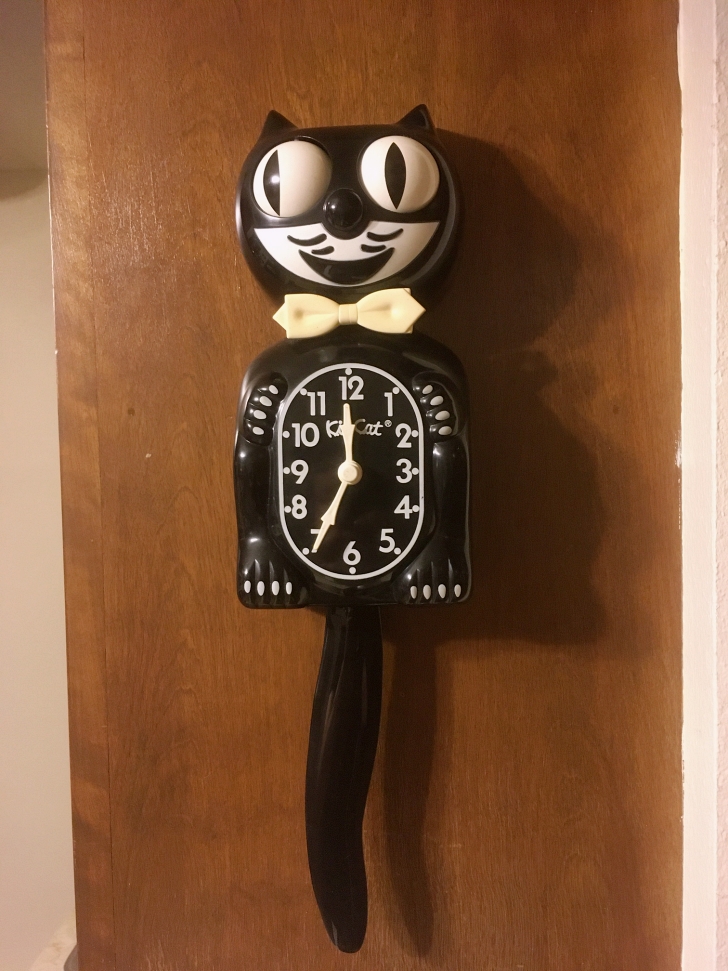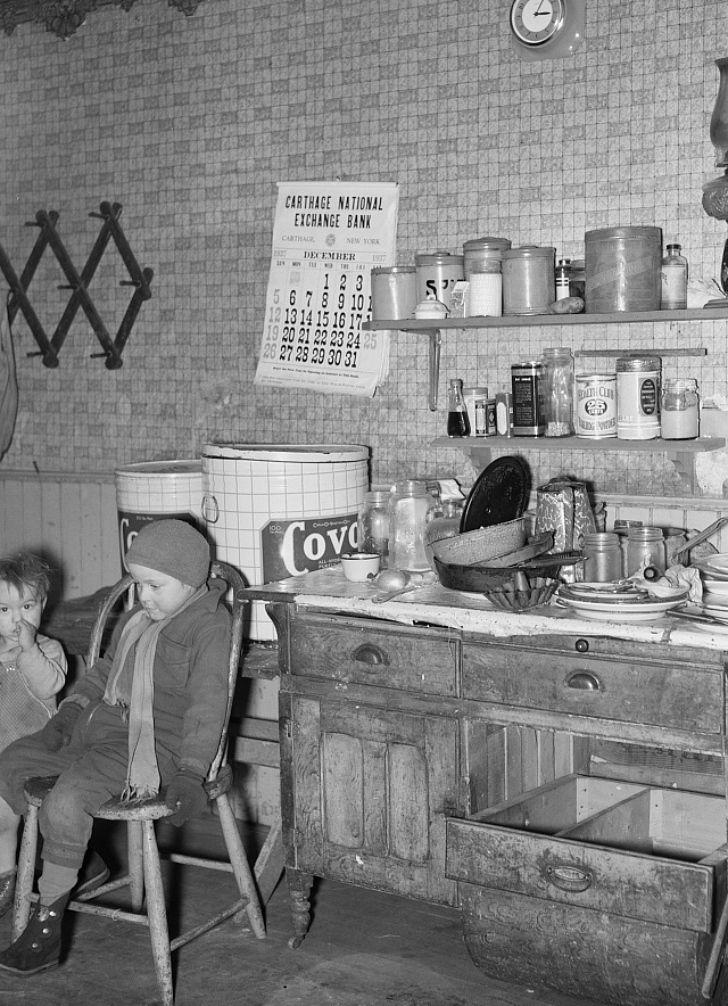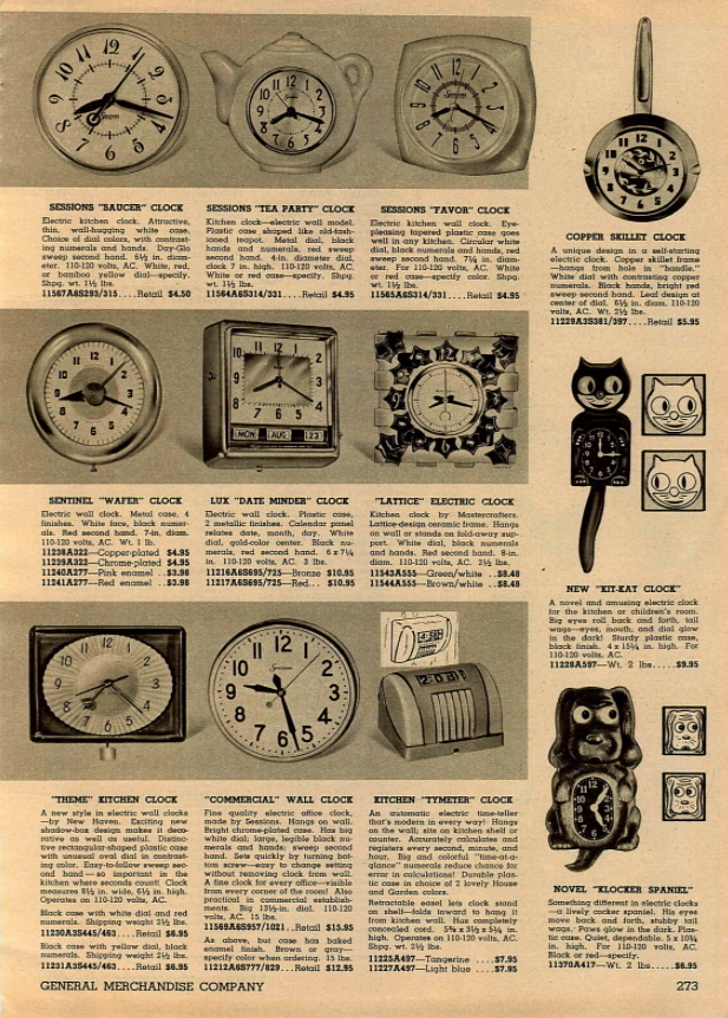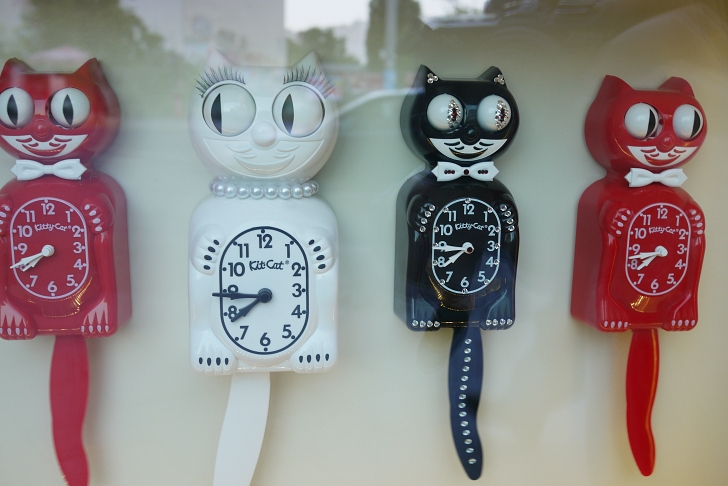You may have seen one in a movie or you might have grown up with one in the kitchen of your childhood home. Those with fond memories of Kit-Cat Klocks tend to still love them into adulthood and even younger generations seem to enjoy the novelty and kitsch of these iconic clocks. Yes, even 9 decades after having first been invented these clocks are still considered quite fun and novel! Here is some of the history and pricing for the classic Kit-Cat Klocks.

The Importance of a Kitchen Clock
Kitchen clocks became an integral part of most households during the 1920s and 1930s. Stay-at-home mothers were increasingly concerned with time management and how to use their time most efficiently in the kitchen. In an era when much of the food was still made from scratch, clocks were crucial to timing the baking of cake or Sunday’s roast to perfection. At the time women’s wristwatches were not yet in production and if one went to the expense of buying a kitchen timer why not go whole hog and just get a clock for the wall?

This feature of the modern kitchen was one of the things that began to turn the kitchen into the heart of the home. Kitchen clocks in this era were hardwired into the house or else were plug-in and their motors often made a soft hum that many people found pleasant.
The History of The Famed Cat Clocks
The first clock in this style was created in 1932 by Earl Arnhault and the original was made from metal. The clocks were made in Portland, OR, by the Allied Clock Company, and were of the winding type of clock. By the 1940s the company had moved operations to Seattle, WA, and had made the clocks in plastic and with electric operation (in keeping up with their competitors).
It’s been said that during the Great Depression people were in need of cheering up and that the Kit-Cat Klocks did just that. And, it’s hard to argue with that logic. The wide smile and big eyes tell of a happy-yet-mischievous feline. The moving -or animated- eyes and tail only add to the fun, making it appear that the cat has something to say about how you’re using your time.

It’s whimsical and fun, something that cuckoo clocks had been providing for centuries before hand. Yet here was this streamlined figure clock created in the Art Deco style, but with a nod to the popular Felix the Cat cartoons that were first released in 1919 and the Micky Mouse cartoons which came to dominate the children’s entertainment market following the 1928 film, Steamboat Willie.
The bow tie, whiskers, and front paws weren’t added until the 1950s, when the clock gained even more popularity in American homes. The classic black and white color scheme meant that it went with pretty much any colors of decor and the fun shape enticed a growing demographic of customers. The clocks proved so popular that they’re considered classic Americana even to this day.
In the 1960s the operations moved to California and were produced by the California Clock Company. It was at this time that the production was expanded to include clocks in the shapes of other animals besides cats. There was a poodle clock and an owl clock.

The popularity of the clock spawned many imitations in the 1930s and beyond. The popular “Klocker Spaniel” clock was made by Galter and featured a stubby-tailed black dog sheepishly moving his eyes. This clock used the same concept of wagging tail and animated eyes, the oval clock face, and even the glow in the dark eyes of the original. The competing clocks were frequently sold alongside each other.
Determining Age and Value
Kit-Cat Klocks are still sold today, and now come in a huge array of colors and patterns from purple to mint green to zebra-striped. You can also buy additions for the clocks like replacement glowing eyes and jewels for the claws. The price is under $100 which makes it still a relatively affordable novelty item. But, if you want an older model they can be pretty pricey.
The California Clock Company moved to battery operated models in the late 1980s as American-made clock motors began to be outsourced to overseas plants, raising the cost to manufacture the clocks. The solution was to create a battery operated movement and this fit well with the times as battery clocks were becoming more popular during this era. If you have a plug in version then you’ve got gold.

Clocks marked with “Portland” are from the 1930s, while those marked with “Seattle” date from the 1940s. One’s marked “El Monte” are from the early 1960s and those marked “San Juan Capistrano” are from the 1960s-1990s. Models marked with “Fountain Valley” are more recently made.
Early models of the clock show only one set of paws and the upper set was added in 1953 so this can help you to determine how old of a clock you might have. The cat’s bowtie was added in 1954.
During the 1960s bejeweled models were sold and today you can buy the crystals to adorn your clock separately. The phrase “Kit-Cat” was added to the clock face (the cat’s belly) in 1982. The Lady Kit-Cat Klocks with pearl necklaces weren’t introduced until 2001. The smaller “Kitty” models are also a recent invention.
Older models of this clock in working order often sell for around $100, but it’s not uncommon to find ones from 1950s and earlier priced at $200-$300. We’ve seen ones form the 1940s priced at $650, so there’s definitely a trend towards higher prices for these timeless time pieces. Limited edition models can also cost in excess of $100, but that doesn’t mean they’re old. Always check the features and stamps listed above to properly date a Kit-Cat Klock.
SKM: below-content placeholderWhizzco for DOT

